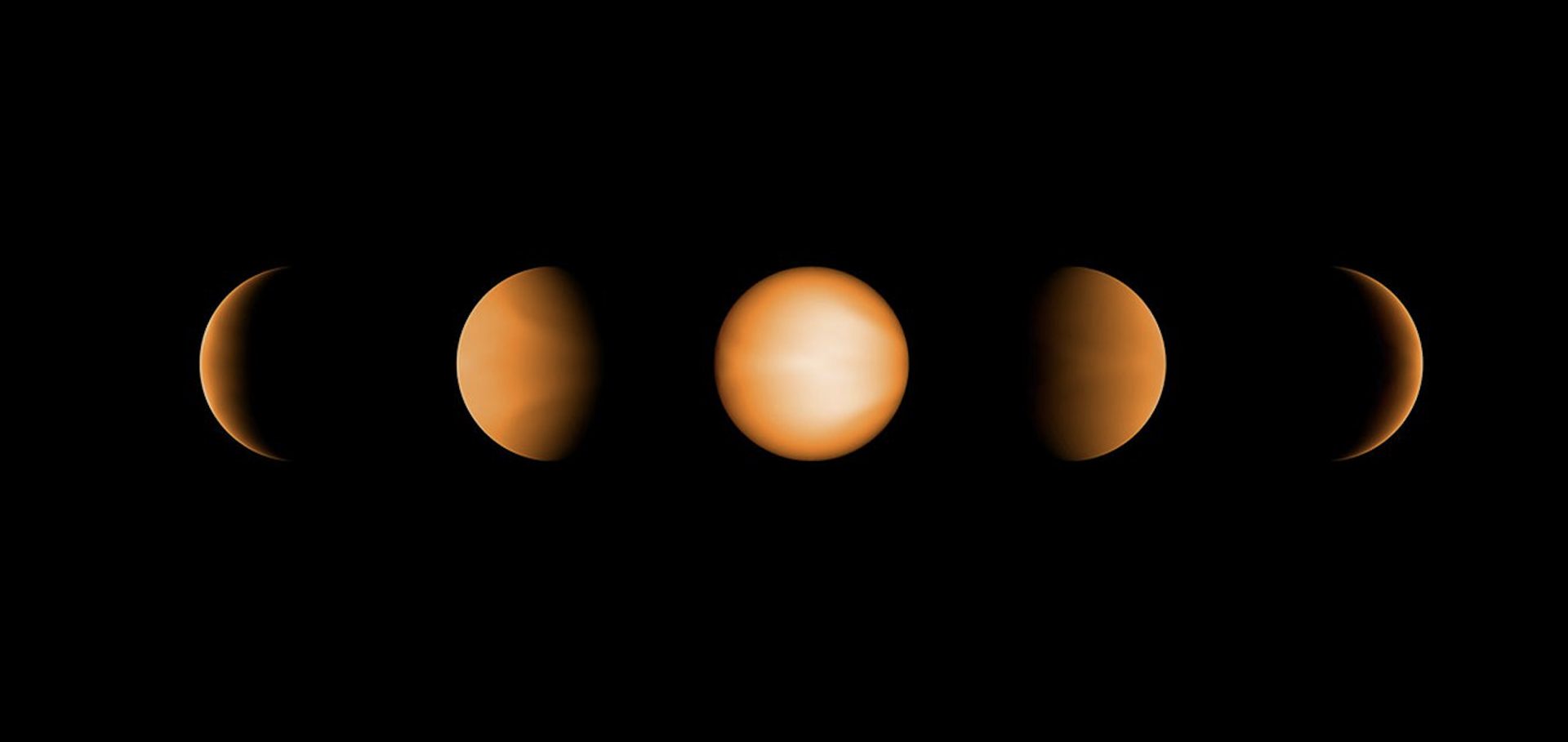Nightside clouds and disequilibrium chemistry on the hot Jupiter WASP-43b
Nature Astronomy Nature Research 8:7 (2024) 879-898
Abstract:
Hot Jupiters are among the best-studied exoplanets, but it is still poorly understood how their chemical composition and cloud properties vary with longitude. Theoretical models predict that clouds may condense on the nightside and that molecular abundances can be driven out of equilibrium by zonal winds. Here we report a phase-resolved emission spectrum of the hot Jupiter WASP-43b measured from 5 μm to 12 μm with the JWST’s Mid-Infrared Instrument. The spectra reveal a large day–night temperature contrast (with average brightness temperatures of 1,524 ± 35 K and 863 ± 23 K, respectively) and evidence for water absorption at all orbital phases. Comparisons with three-dimensional atmospheric models show that both the phase-curve shape and emission spectra strongly suggest the presence of nightside clouds that become optically thick to thermal emission at pressures greater than ~100 mbar. The dayside is consistent with a cloudless atmosphere above the mid-infrared photosphere. Contrary to expectations from equilibrium chemistry but consistent with disequilibrium kinetics models, methane is not detected on the nightside (2σ upper limit of 1–6 ppm, depending on model assumptions). Our results provide strong evidence that the atmosphere of WASP-43b is shaped by disequilibrium processes and provide new insights into the properties of the planet’s nightside clouds. However, the remaining discrepancies between our observations and our predictive atmospheric models emphasize the importance of further exploring the effects of clouds and disequilibrium chemistry in numerical models.Global Chemical Transport on Hot Jupiters: Insights from the 2D VULCAN Photochemical Model
The Astrophysical Journal American Astronomical Society 963:1 (2024) 41
Sulfur dioxide in the mid-infrared transmission spectrum of WASP-39b
Nature Springer Nature 626:8001 (2024) 979-983
Modelling the day–night temperature variations of ultra-hot Jupiters: confronting non-grey general circulation models and observations
Monthly Notices of the Royal Astronomical Society Oxford University Press (OUP) 528:1 (2024) 1016-1036
Methane throughout the atmosphere of the warm exoplanet WASP-80b
Nature Springer Nature 623:7988 (2023) 709-712


